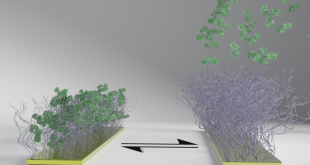By JANA MANOLAKOS
In the face of a critical shortage of ventilators during the COVID-19 pandemic, a team of physicians and engineers from the University of Calgary have developed an award-winning device that safely increases available machines at a low cost.
The Valence InVent Xtend allows a single ventilator to provide air for up to four patients, with the capability of personalized and real-time modifications. Its adjustable valve enclosure and ventilator multiplexor allows multiple patients with different ventilation needs to share one machine. It recently received official Health Canada licensing under the COVID-19 Interim Order.
The device was invented by Steven Roy, a critical care medicine fellow at the University of Calgary and founder of Convergence Medical Sciences, a tech start-up which is now manufacturing the device. “There was a ventilator shortage or concerns about ventilator shortages. The U.S. actually had hundreds of ventilators that it couldn’t use because they were in storage and had not been maintained,” noted Roy.
The device is a medical device that allows a ventilator’s circuit to be split between multiple patients. This allows patients to be ventilated with a single ventilator for two to four patients.
Roy points out that the device doesn’t require any maintenance, and it can expand the ventilator capacity that’s available very quickly and for a much lower cost than purchasing more ventilators.
The device costs about $50 per patient, as compared to the $70,000 price of a ventilator.
“What struck me most about this project was how there was an immediate need that was identified and how quickly we were able to form a group to collaborate and to come up with a solution to this problem,” notes his colleague Paul McBeth, an intensive care doctor..
Roy began working on prototypes of a split ventilator in his garage after ventilator shortages were first reported during the COVID-19 pandemic.
“There were times when I would be on call overnight and working a 24-hour shift, then go home and have a nap, then go work on this device,” Roy says.
He was looking for someone to study the system with him and to characterize how the system works from a physics and an engineering point of view.
Roy fit the bill as a former mechanical engineer and an expert in surgical robotics. “This has been a really exciting project to be involved with because it bridges the gaps between the engineering and medicine. And we’re using engineering techniques to really solve an important clinical problem, which is around ventilation,” recalls McBeth.
He also enlisted the help of University of Calgary engineer Dr. Jihyun Lee. Lee explains, “Our role is to monitor the air dynamic of the system. For example, all the patients have a different lung compliance, how their air dynamics goes in, and then how their lungs behave and they react from the ventilator. So we implemented a pressure sensor to detect pressure changes and flow rate in real time.”
To help close dangerous gaps in the provision of ventilators, Roy wanted to build something that required little to no maintenance and was cost-effective, so he teamed up with Exergy Solutions to create a functional 3D-printed model.
“So the device has now licensed by Health Canada under the COVID-19 Interim Order,” Roy said. “And that allows it to be used with patients in Canada, in the setting of a critical ventilator shortage.”
Convergence Medical Sciences, along with Exergy Solutions, was recognized with an International Red Dot Design Award in June. More recently, they received a bronze International Design Excellence Award from the Industrial Designers Society of America.
 BioLab Business Magazine Together, we reach farther into the Canadian Science community
BioLab Business Magazine Together, we reach farther into the Canadian Science community





